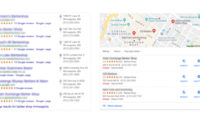Comprehensive, In-Depth Content
Comprehensive, in-depth content has been critical ever since Google’s
“In-Depth Articles”
algorithm update which helped revolutionize content strategy. A strong strategy focused on broadly explanatory, deep content also focuses on tactics to boost your content’s SEO-friendliness. These steps include optimizing page titles; including high-quality images; integrating latent semantic indexing (LSI) and secondary keywords; inserting internal links; and incorporating structured data markup. (See a full list of what to include below.)
What is in-depth content?
In-depth, as the name suggests, signifies broad definition or outlining of a subject.
in-depth articles
on the web. They are:
- Use of schema.org “article” markup
- Inclusion of “authorship” markup
- Use of rel=next and rel=prev
- Detailed explanation of the organization’s logo
- Compelling, relevant, and in-depth content.
Adhering to the above guidelines makes it easy for Google to better understand your pages. It improves the chances of them appearing prominently in search results.
Meaning of Google’s “in-depth articles”
“in-depth articles”
to highlight high-quality and “comprehensive” (or at least extremely thorough) articles. Through this feature, Google was aiming to point to well-written, relevant and contextually grounded content in search results.
According to experts, this feature focuses on the creation of quality content. Quality content can be defined as original, expansive, and well-researched information that is non-commercial. Your article should not focus on selling your business or services. The content should include significant facts from credible sources. Typically it should be “evergreen,” remaining relevant over the years; however, writing about the current landscape in detail is also a legitimate course.
Your content should include:
- Accurate and descriptive page titles
- Strategically placed LSI and secondary keywords
- An accurate, descriptive summary and key takeaways
- Structured data markup
- Internal links (improving your site’s meaningful navigability)
- High quality images (potentially info-graphics, interactive content, or memes).
Another way of measuring the quality of the content is, of course, how well it covers a given subject.
HTML attributes,
such as rel=prev and rel=next, when writing long articles. Proper use of these attributes can help the content appear higher in the search engine results pages (SERPs).
So how can one meet
Google’s requirements for in-depth articles?
There are certain tools that help marketers and other writers meet the requirements of in-depth articles. A key one is Google’s Structured Data Markup Helper. When you paste an article’s URL into this tool, it tags key portions of the article – such as the author’s name, publication date, article body, and images. The Markup Handler then generates HTML for you to add to your content.
Initially, Google’s in-depth feature was said to be beneficial for larger companies and well-established websites. Over the years, smaller sites and blogs have also gained attention with strong, relevant and lengthy content that digs deeply into subjects and contains appropriate markup.
Conclusion
Well-written and detailed content that covers a topic in depth can help you get the attention you need through search. It can also help you drive user engagement, improving loyalty and raising conversion. For thoughtful content analysis and guidance, email contact@epikso.com or book an appointment today.












